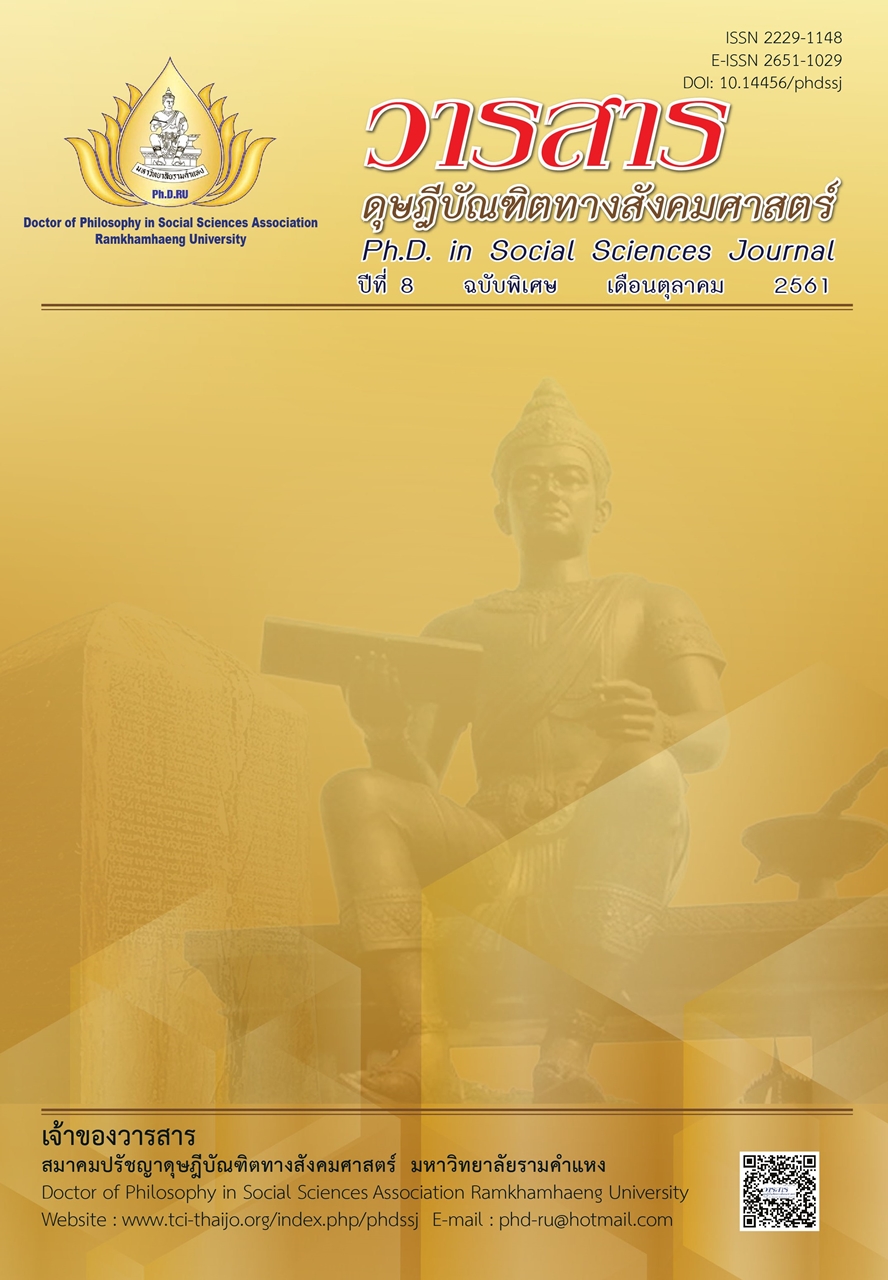Leadership Models Effecting To The Motivation of Personnel Performance in Thongsook College
Main Article Content
Abstract
Leadership research that promotes job motivation of Thongsook College personnel. Quantitative research Quantitative Research aims to: 1) study the leadership level of Thongsook College executives; 2) study the level of motivation in the operation of the Thongsook College staff 3) study the relationship between executive leadership style and motivation; In the performance of personnel in Thongsook College The population of this study is 131 teachers, 39 support personnel, total 170. The tool used was the questionnaire. Statistics used in data analysis were percentage, mean, standard deviation, and correlation coefficient.
The results showed that most respondents were female (57.65%), aged 31-35 years (37.06%) had higher education level than bachelor. (62.94%) had marital status (57.06%) and had average monthly income of 20,001 baht (42.53%). Leadership of the executives was at a high level (μ = 3.95 σ = 0.31). In terms of leadership change (μ = 4.20 σ = 0.40), leadership neglect (μ = 4.16 σ = 0.60) and leadership style Exchange (μ = 3.50 σ = 0.41), respectively. In terms of job satisfaction (μ = 4.51 σ = 0.46), the level of job satisfaction (μ = 4.16 σ = 0.66). The level of achievement (μ = 3.71, σ = 0.67) change Encourage employee motivation. In terms of responsibility (r = .81) and job advancement (r = .74) Encourage employee motivation. Gold for happiness in the success of the work (r = .76). The abandoned leadership style does not promote motivation in all aspects.
Article Details
Academic articles, research articles, and book reviews in the Ph.D. in Social Sciences Journal are author’s opinions, and not the publisher’s, and is not the responsibility of the Ph.D. in Social Sciences Journal Philosophy Association, Ramkhamhaeng University. (In the case that research is done on human, the researcher has to be trained in Ethics for Doing Research on Human Training and has to produce the evidence of the training).
References
Chumsri, T. (2002). Relationships between personal factors, perceived benefits, perceived barriers, perceived self-efficacy, interpersonal influences and health promoting behaviors of pregnant adolescents, southern region. Master's thesis nursing science, Chulalongkorn University. [In Thai]
Hersey, P., & Blanchard, K. H. (1982). Management of organizational behavior: Utilizing human resources. Englewood Cliffs, NJ: Prentice Hall.
Herzberg, F., Mausner, B., & Snyderman, B. B. (1959). The motivation to work. New York: John Wiley & Sons.
Hunkrua, W. (2015). The leadership factors affecting job motivation of the staff at the Royal Palace Bureau. Bangkok: Thongsook College. [In Thai]
Kesakorn, Y. (2001). Leadership and motivation techniques (3rd ed.). Bangkok: Pannarat. [In Thai]
Kruanate, T., Siriwoharn, T., & Sriharun, B. (2015). The leadership and work motivation of employeesat Thai Foods Group of Company Limited. Academic Journal of North Bangkok University, 4(1), 22-37. [In Thai]
Kaewnuey, J. (2013). Motivation in performing the work of teachers in the Rak Chao Ram, Ban Lan Hoi, Sukhothai province. Bangkok: Thongsook College. [In Thai]
Phuangsomchit, C. (2003). Educational institutions and communities. Management of educational management units 12, Nonthaburi: Sukhothai Thammathirat Open University. [In Thai]
Tanaichote, T. (2006). Leadership. Journal of Academic Services, 14(12), 42-47. [In Thai]
Tantae, P. (2014). Opinions on the leadership of the administrators and the members of the Nakhon Chum District Administrative Organization Council, Nakorn Thai District, Phitsanulok Province. Bangkok: Thongsook College. [In Thai]
Weerawattananant, M. (2013). Motivation in the operation of personnel, accounting department, fund department, at the Royal Palace Bureau. Bangkok: Thongsook College. [In Thai]


